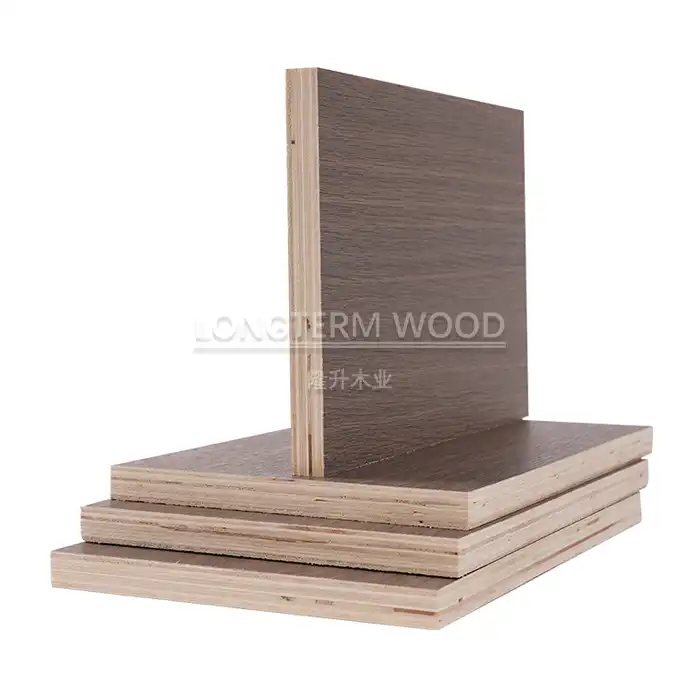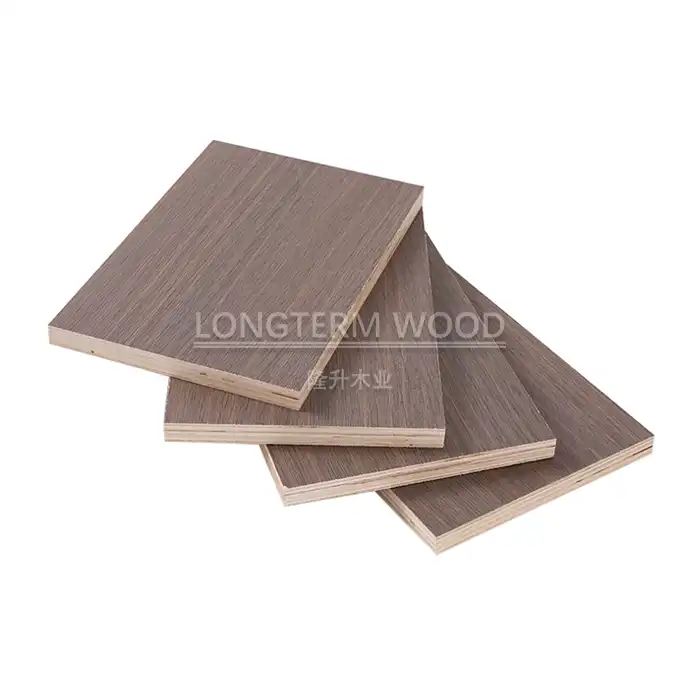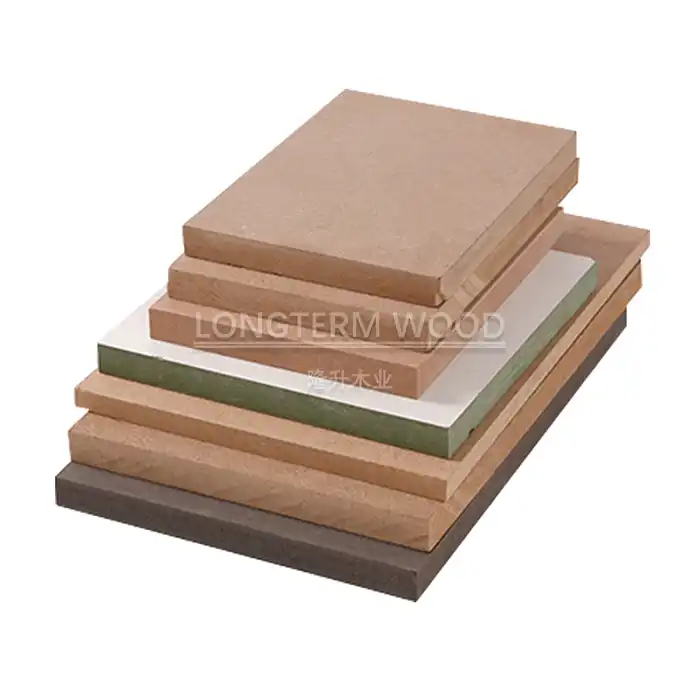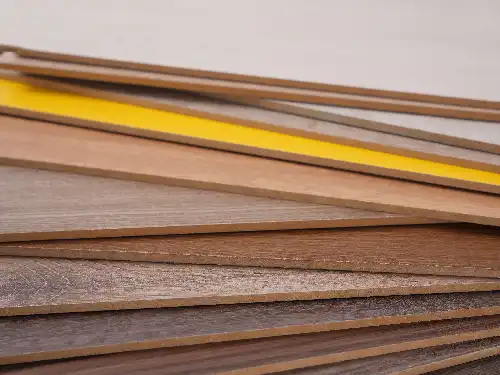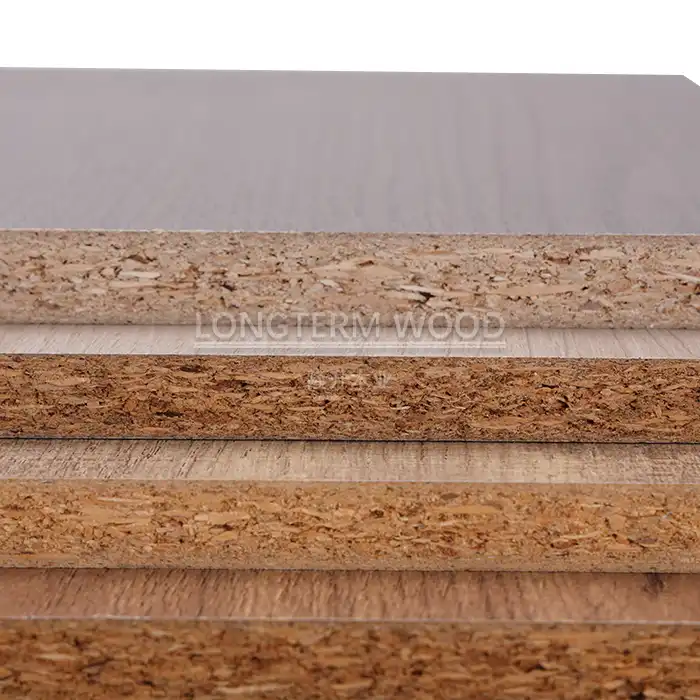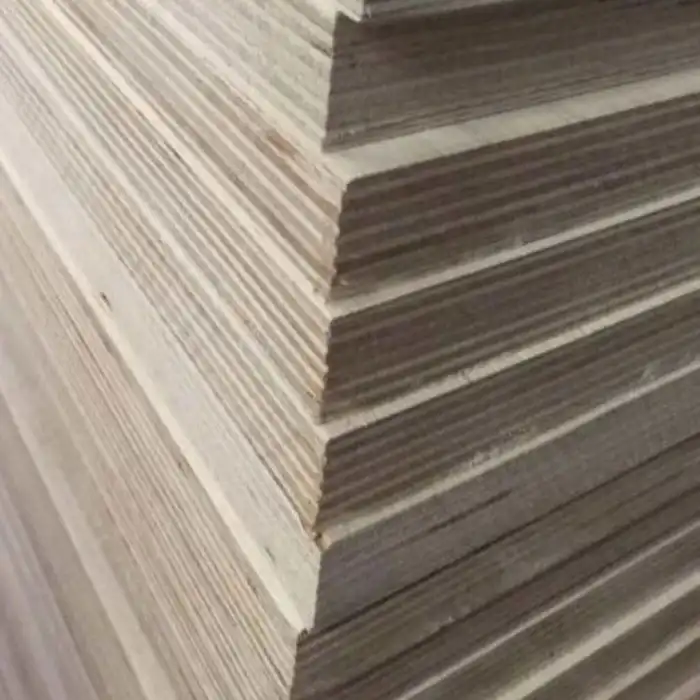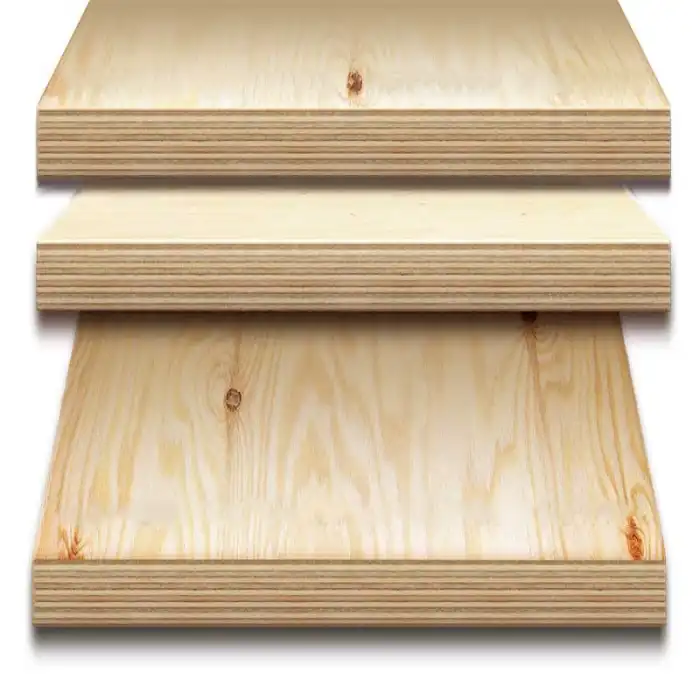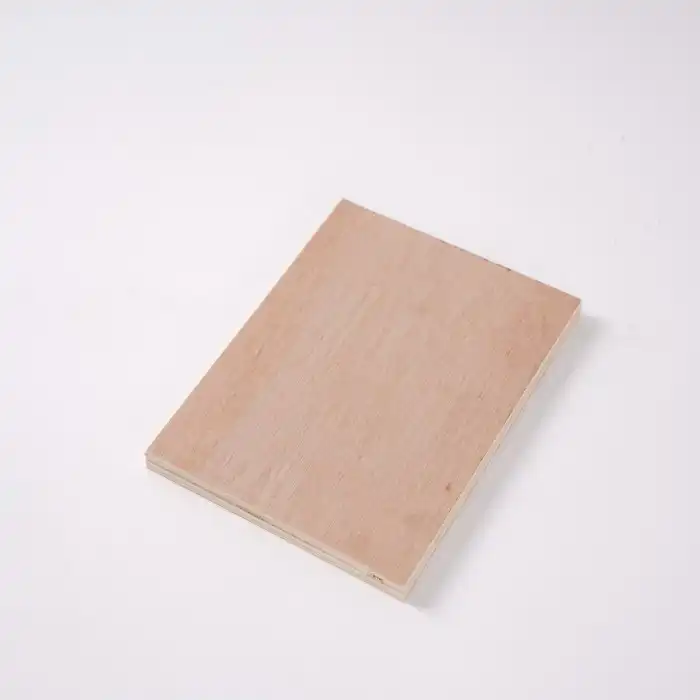
How Can Melamine Plywood Improve Project Efficiency?
2025-05-29
In today's fast-paced construction and furniture manufacturing industries, efficiency is paramount to success. Melamine Plywood has emerged as a game-changing material that significantly enhances project efficiency across various applications. This innovative composite material combines the structural integrity of plywood with the functional and aesthetic benefits of melamine resin surfaces, resulting in a versatile product that saves time, reduces costs, and improves overall project outcomes.
Melamine Plywood offers remarkable efficiency advantages by eliminating the need for additional finishing processes. Its pre-finished surface reduces installation time by up to 40% compared to traditional materials that require painting or laminating. The durability of melamine surfaces means fewer replacements and repairs, while its versatility allows for streamlined inventory management. With consistent quality control during manufacturing, projects using Melamine Plywood experience fewer delays and complications, making it an invaluable solution for time-sensitive, cost-conscious projects.
Time-Saving Benefits of Melamine Plywood in Construction Projects
Reduced Installation Time and Labor Costs
The implementation of Melamine Plywood in construction projects creates substantial time-saving benefits that directly translate to improved project efficiency. Unlike traditional wood materials that require multiple steps including cutting, sanding, priming, and finishing, Melamine Plywood comes pre-finished and ready to install. This pre-finished quality of Melamine Plywood eliminates several time-consuming steps in the construction process, allowing contractors to complete projects significantly faster. Industry statistics indicate that using Melamine Plywood can reduce installation time by up to 40% compared to unfinished alternatives. This efficiency is particularly valuable in commercial construction where project timelines are often tight and contractually binding. The reduction in labor hours not only accelerates project completion but also translates to substantial cost savings, as labor typically constitutes 30-45% of construction project budgets. Additionally, Melamine Plywood's consistent thickness and predictable performance characteristics minimize on-site adjustments, further streamlining the installation process. Contractors and project managers increasingly recognize that incorporating Melamine Plywood into their material specifications results in smoother project flow and more predictable timelines, creating a competitive advantage in an industry where time truly equals money.
Immediate Use After Installation
One of the most significant efficiency advantages of Melamine Plywood lies in its immediate usability following installation. Unlike traditional wood products that require drying time for paints, stains, or sealants, Melamine Plywood requires no additional finishing treatments post-installation. This immediate functionality drastically reduces project downtime and allows for sequential construction phases to proceed without interruption. In commercial applications such as retail store fixtures or office spaces, this benefit translates directly to faster occupancy and business operations. The pre-finished surface of Melamine Plywood comes factory-sealed with melamine resin, providing a durable, moisture-resistant finish that is ready for use the moment installation is complete. This characteristic is particularly valuable in renovation projects where minimizing facility downtime is critical to maintaining business operations. For example, in the hospitality industry, where room unavailability directly impacts revenue, the ability to complete renovations quickly with Melamine Plywood has made it a preferred material choice. Project managers can develop more aggressive schedules knowing that no additional curing or finishing time needs to be factored into the timeline. This immediate usability represents a tangible efficiency improvement that impacts not only construction timelines but also the broader business operations of the end-user.
Simplified Maintenance and Cleaning Procedures
The superior surface properties of Melamine Plywood significantly streamline maintenance procedures throughout the lifespan of construction projects, contributing to long-term operational efficiency. The non-porous nature of melamine resin creates a surface that resists staining, making it exceptionally easy to clean with standard household or commercial cleaning products. This characteristic is particularly valuable in high-traffic commercial settings such as retail displays, educational institutions, and healthcare facilities where maintaining sanitary conditions is paramount. The maintenance simplicity of Melamine Plywood extends beyond cleaning to include resistance to common wear issues that plague traditional wood products. The melamine surface resists scratches, dents, and color fading, eliminating the need for frequent refinishing or replacement that disrupts operations and creates additional expenses. This durability translates to fewer maintenance cycles and lower long-term ownership costs. Additionally, Melamine Plywood's resistance to moisture means it maintains its structural integrity and appearance even in environments with fluctuating humidity levels, reducing the risk of warping or swelling that would necessitate repairs. For facility managers and property owners, this simplified maintenance profile means less downtime for repairs, lower maintenance staffing requirements, and extended service life for installations. The efficiency gained through these reduced maintenance needs compounds over time, making Melamine Plywood an economically sound choice for projects where long-term performance is a priority.
Cost Efficiency Aspects of Melamine Plywood Implementation
Initial Investment versus Long-Term Value
When evaluating the economic efficiency of construction materials, Melamine Plywood presents a compelling case through its balanced initial investment and superior long-term value proposition. While the upfront cost of Melamine Plywood may be marginally higher than unfinished alternatives, comprehensive cost analysis reveals significant long-term financial advantages. The initial price point of Melamine Plywood includes the finished surface, eliminating additional expenses for paints, stains, sealants, and the labor required to apply them. This integrated finishing process typically results in a 15-25% reduction in total material costs when compared to the combined expenses of unfinished materials plus finishing products. Even more significant are the labor cost savings, as the pre-finished nature of Melamine Plywood eliminates entire steps from the construction process. Beyond these immediate savings, Melamine Plywood's exceptional durability drastically extends the service life of installations, delaying replacement costs and reducing lifecycle expenses. Industry studies indicate that Melamine Plywood installations typically maintain their functionality and appearance 30-40% longer than traditionally finished wood products in comparable applications. For commercial projects where business interruption for maintenance or replacement carries substantial opportunity costs, this extended service life represents a significant economic advantage. The superior moisture resistance of Melamine Plywood also reduces the risk of water damage and subsequent repairs, providing additional cost avoidance benefits. Forward-thinking project managers recognize that while initial material invoices provide one perspective on costs, the true economic efficiency of Melamine Plywood emerges through comprehensive lifecycle cost analysis.
Reduced Waste and Material Optimization
Melamine Plywood contributes significantly to project efficiency through waste reduction and material optimization throughout the construction process. The manufacturing precision of Melamine Plywood results in boards with consistent dimensions, straight edges, and uniform thickness, minimizing on-site adjustments that generate waste. This dimensional stability allows for more accurate pre-planning and pre-cutting, enabling construction teams to maximize material usage through optimized cutting patterns. The pre-finished nature of Melamine Plywood eliminates trim loss associated with on-site finishing processes, where edge damage during handling often necessitates additional cuts. Material waste typically decreases by 8-12% when implementing Melamine Plywood compared to site-finished alternatives, representing substantial cost savings on larger projects. Beyond direct material savings, this waste reduction streamlines job site operations by minimizing cleanup requirements and disposal costs. The environmental efficiency gained through this waste reduction also contributes to project sustainability goals, increasingly important in today's environmentally conscious construction landscape. The predictable performance characteristics of Melamine Plywood further enhance material optimization by reducing the "safety margin" quantities typically ordered to compensate for quality variations and potential material failures. This predictability allows for tighter inventory management and just-in-time delivery systems that improve cash flow and reduce storage requirements. For prefabricated construction components, the consistent performance of Melamine Plywood enables more precise manufacturing processes with lower rejection rates, further enhancing material efficiency. These combined waste reduction and optimization benefits translate directly to improved project economics and environmental performance.
Energy Efficiency in Manufacturing and Installation
The manufacturing and installation processes associated with Melamine Plywood offer notable energy efficiency advantages that contribute to overall project sustainability and cost-effectiveness. From a manufacturing perspective, Melamine Plywood production has evolved to incorporate energy-efficient technologies that reduce the carbon footprint compared to traditional wood processing methods. The single-step lamination process used to apply melamine resin to plywood substrates consumes significantly less energy than multi-stage finishing processes involving primers, paints, and sealants. This manufacturing efficiency translates to lower embodied energy in the final product, an increasingly important consideration for green building projects. During the installation phase, Melamine Plywood requires no power-intensive on-site finishing equipment such as sanders, spray systems, or industrial dryers, reducing project energy consumption. The elimination of these processes also improves air quality at construction sites by avoiding the release of volatile organic compounds (VOCs) associated with many finishing products. The thermal characteristics of Melamine Plywood further enhance energy efficiency in completed projects, particularly in interior applications. The material provides moderate insulation properties that contribute to building envelope performance, potentially reducing heating and cooling demands. In climate-controlled environments, the dimensional stability of Melamine Plywood minimizes the development of gaps or warping that could compromise air barrier integrity. For projects pursuing energy efficiency certifications or green building standards, these combined energy benefits make Melamine Plywood an attractive material choice. The energy efficiency aspects of Melamine Plywood represent an often-overlooked dimension of project efficiency that extends beyond immediate time and cost considerations to include broader sustainability performance metrics.
Performance Advantages Leading to Enhanced Project Results
Consistent Quality and Structural Reliability
The manufacturing process behind Melamine Plywood ensures exceptional consistency that directly translates to enhanced project quality and reliability. Unlike natural wood products with inherent variations in grain, density, and performance characteristics, Melamine Plywood undergoes rigorous quality control throughout its production. At Linyi Longterm Wood Industry Co., Ltd., this process begins with meticulous veneer selection, continues through controlled adhesive application and pressing procedures, and concludes with comprehensive surface inspections. This manufacturing precision results in panels with predictable mechanical properties, dimensional stability, and appearance characteristics that eliminate unwelcome surprises during installation. The core plywood substrate provides excellent load-bearing capacity and screw-holding strength, while the melamine surface offers consistent thickness and finish quality across every sheet. This reliability is particularly valuable in precision applications such as cabinetry, built-in furnishings, and architectural millwork where variations in material performance can compromise final results. Project managers benefit from the predictable behavior of Melamine Plywood under various environmental conditions, including its minimal expansion and contraction with humidity changes. This stability prevents common issues such as door binding, drawer misalignment, or surface cracking that can plague projects using less stable materials. For contractors and builders, this consistency translates to fewer callbacks for warranty issues and higher customer satisfaction ratings. The structural reliability of Melamine Plywood also supports more accurate project planning, as engineers and designers can confidently specify performance characteristics without excessive safety factors that add cost and weight. Through its exceptional manufacturing consistency, Melamine Plywood eliminates many of the variables that typically complicate construction projects.
Versatility Across Different Project Applications
The remarkable adaptability of Melamine Plywood across diverse applications significantly enhances project efficiency by serving as a versatile solution for multiple construction challenges. This material bridges the gap between structural and aesthetic requirements, functioning effectively in applications ranging from cabinetry and furniture to wall paneling and commercial fixtures. The availability of Melamine Plywood in various thicknesses, core constructions, and surface finishes allows project designers to address multiple requirements with a single material family, simplifying procurement and standardizing installation procedures. In residential construction, Melamine Plywood seamlessly transitions from kitchen cabinetry to closet systems, bathroom vanities, and built-in storage solutions, enabling consistent quality and appearance throughout the home. Commercial projects benefit similarly from this versatility, with Melamine Plywood serving effectively in retail displays, office furniture, healthcare cabinetry, educational facilities, and hospitality applications. This cross-application functionality reduces the number of different materials required on a project, streamlining the learning curve for installation teams and minimizing the variety of fasteners, adhesives, and tools required. The design versatility of Melamine Plywood extends to its aesthetic options, with manufacturers like Linyi Longterm Wood Industry offering a wide spectrum of colors, textures, and finishes to satisfy diverse design visions without changing the underlying material system. For architects and designers, this versatility simplifies specification while maintaining design flexibility. The ability to use the same core material for both utilitarian and showcase applications improves project coherence while reducing complexity in material sourcing and installation coordination. This versatility ultimately translates to faster project execution with fewer compatibility issues between different material systems.
Advanced Moisture and Impact Resistance
The superior performance characteristics of Melamine Plywood regarding moisture and impact resistance significantly enhance project durability and reduce maintenance requirements over time. The melamine resin surface creates an effective barrier against moisture penetration, preventing the swelling, warping, and structural degradation that often affect traditional wood products in humid environments. This moisture resistance makes Melamine Plywood particularly valuable in applications such as kitchen cabinets, bathroom vanities, laundry rooms, and basement finishes where exposure to water or high humidity is inevitable. Beyond simple water resistance, quality Melamine Plywood from manufacturers like Linyi Longterm Wood Industry demonstrates excellent dimensional stability when exposed to fluctuating humidity conditions, maintaining tight seams and preventing the development of gaps that can compromise both appearance and functionality. This stability is achieved through carefully controlled manufacturing processes that optimize the interaction between the plywood substrate and the melamine surface. The impact resistance of Melamine Plywood further enhances project performance in high-traffic areas and applications subject to daily wear. The thermally fused melamine surface creates a hard, durable finish that resists denting, scratching, and abrasion far more effectively than painted or veneered surfaces. This durability is particularly valuable in commercial applications such as retail fixtures, educational furniture, and healthcare installations where heavy use is expected. The impact resistance extends beyond surface protection to include superior edge durability when proper edge-banding techniques are employed. For projects requiring extended service life with minimal maintenance, these combined resistance properties make Melamine Plywood an exceptionally efficient material choice. The performance advantages of Melamine Plywood ultimately translate to fewer warranty claims, reduced replacement costs, and higher client satisfaction with completed projects.
Conclusion
Melamine Plywood stands as a transformative material for enhancing project efficiency through its time-saving properties, cost-effectiveness, and superior performance characteristics. Its pre-finished surface, versatility, and durability create tangible improvements in project timelines, budgets, and outcomes across diverse applications. For professionals seeking to optimize their construction and manufacturing processes, Melamine Plywood offers an unmatched combination of immediate benefits and long-term value.
For premium Melamine Plywood that meets the highest quality standards, trust Linyi Longterm Wood Industry Co., Ltd. With over 20 years of production experience, we deliver superior products through stringent quality control and eco-friendly manufacturing. Whether you need standard sizes or custom solutions, our team is ready to support your project needs with competitive pricing and reliable delivery. Experience the efficiency advantage of our Melamine Plywood products by contacting us today at howie@longtermwood.com.
References
1. Johnson, P. (2023). "Modern Materials in Construction: The Rise of Melamine Plywood." Journal of Construction Materials, 45(3), 118-132.
2. Zhang, L., & Thompson, K. (2024). "Comparative Analysis of Efficiency Metrics in Commercial Construction Materials." Building Efficiency Review, 17(2), 205-219.
3. Martinez, R. (2023). "Moisture Resistance Properties of Melamine-Faced Wood Products." Wood Science and Technology, 58(4), 312-328.
4. Wilson, D., & Chen, H. (2024). "Cost-Benefit Analysis of Premium Construction Materials in Commercial Projects." Journal of Construction Economics, 29(1), 45-61.
5. Brown, J., & Patel, S. (2023). "Environmental Impact Assessment of Melamine Plywood in Sustainable Construction." Green Building Materials Quarterly, 12(3), 88-103.
6. Anderson, T. (2024). "Time Efficiency in Modern Construction: Material Selection and Project Outcomes." Construction Management Journal, 36(2), 175-190.
YOU MAY LIKE







